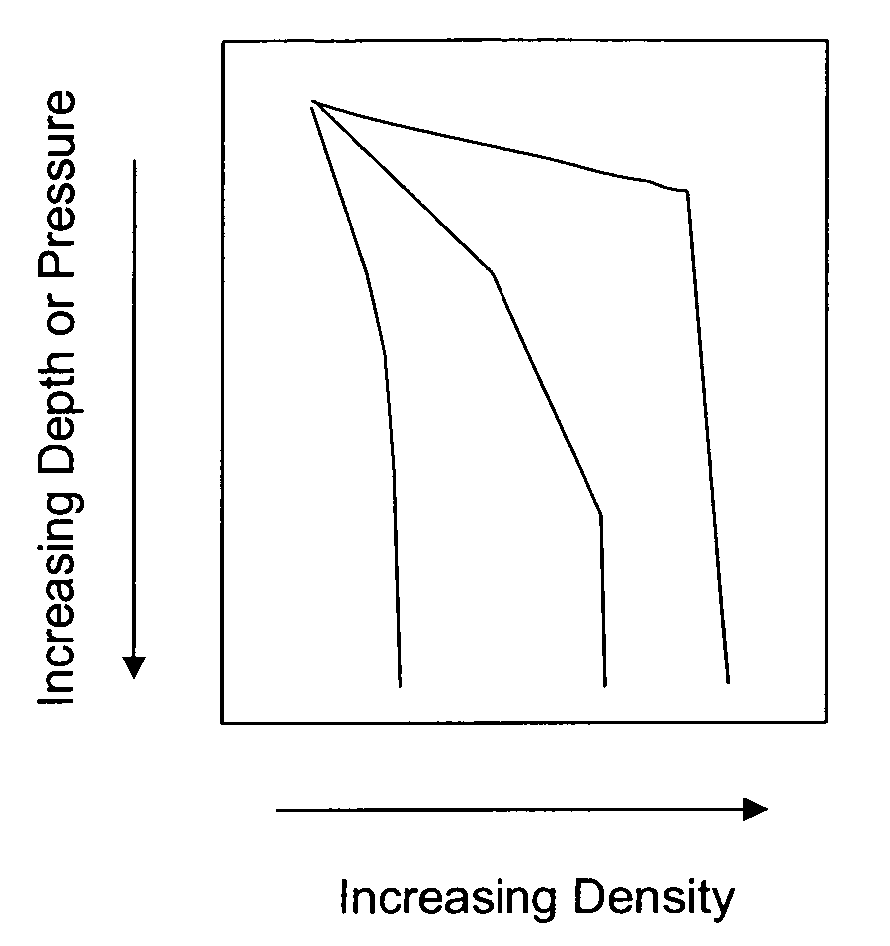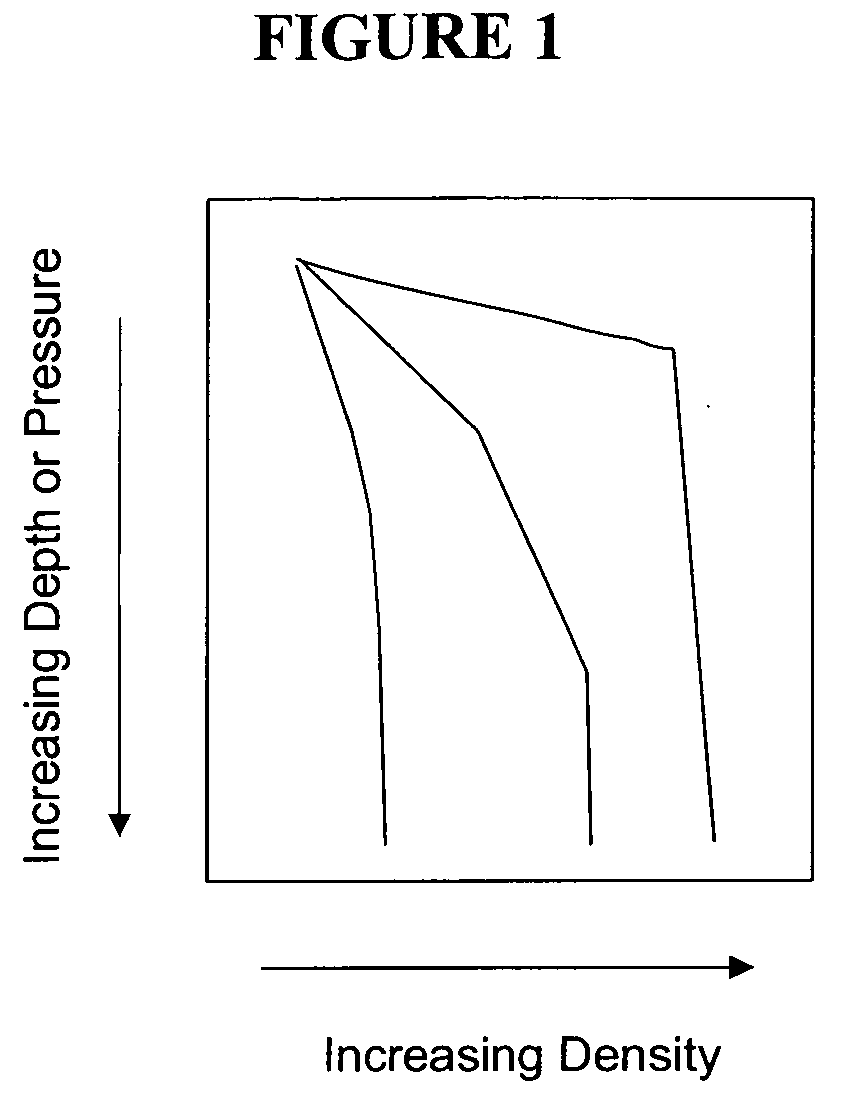Variable density treatment fluids and methods of using such fluids in subterranean formations
a treatment fluid and variable density technology, applied in the field of subterranean treatment fluids, can solve the problems of uncontrolled blowout of the formation, high cost, and high risk of drillers, and achieve the effect of satisfying the limitations of drilling fluids, reducing drilling costs, and improving drilling efficiency
- Summary
- Abstract
- Description
- Claims
- Application Information
AI Technical Summary
Benefits of technology
Problems solved by technology
Method used
Image
Examples
example 1
[0046] A numerical simulation was performed to model embodiments of a VPWM particle of the present invention comprising elastomeric materials configured in the shape of a disk. Each of the two sides of the disk may behave like a pressure-loaded diaphragm. Thus, each side of the disk may be evaluated as a circular plate subjected to a uniformly distributed loading, as illustrated in FIG. 3. The deflection of such circular plate when subjected to such loading depends on factors such as the circular plate's material properties, geometric properties, as well as upon certain boundary conditions and the magnitude of the loading. A variety of formulae for particular plate and load configurations may be found in textbooks such as “Roark's Formulas for Stress and Strain” by Young and Roark, as well as “Formulas for Stress, Strain and Structural Matrices” by Pilkey.
[0047] The deflection of one side of the VPWM particles that are the subject of this example will be modeled as that of a clampe...
example 2
[0055] A numerical simulation was performed to model embodiments of a VPWM particle of the present invention comprising elastomeric materials configured in the shape of a disk.
[0056] Sample Composition No. 4 represents a VPWM particle formed from a VITON™ elastomer having an inner diameter of 0.1 inches, a diaphragm thickness of 0.02 inches, and a distance T of 0.04 inches, and an internal pressure of 0 psi.
[0057] Sample Composition No. 5 represents a VPWM particle formed from a VITON™ elastomer having an inner diameter of 0.1 inches, a diaphragm thickness of 0.02 inches, a distance T of 0.04 inches, and an internal pressure of 25 psi.
[0058] Sample Composition No. 6 represents a VPWM particle formed from a VITON™ elastomer having an inner diameter of 0.1 inches, a diaphragm thickness of 0.02 inches, and a distance T of 0.04 inches, and an internal pressure of 100 psi.
[0059] Sample Composition No. 7 represents a VPWM particle formed from a VITON™ elastomer having an inner diamete...
example 3
[0062] A numerical simulation was performed to model embodiments of a VPWM particle of the present invention comprising polyethylene configured in the shape of a disk.
[0063] Sample Composition No. 8 represents a VPWM particle formed from polyethylene having an inner diameter of 0.1 inches, a diaphragm thickness of 0.02 inches, and a distance T of 0.02 inches.
[0064] Sample Composition No. 9 represents a VPWM particle formed from polyethylene having an inner diameter of 0.1 inches, a diaphragm thickness of 0.02 inches, and a distance T of 0.04 inches.
[0065] Sample Composition No. 10 represents a VPWM particle formed from polyethylene having an inner diameter of 0.2 inches, a diaphragm thickness of 0.02 inches, and a distance T of 0.04 inches.
[0066] Sample Composition No. 11 represents a VPWM particle formed from polyethylene having an inner diameter of 0.4 inches, a diaphragm thickness of 0.02 inches, and a distance T of 0.04 inches.
[0067] Sample Composition No. 12 represents a V...
PUM
| Property | Measurement | Unit |
|---|---|---|
| density | aaaaa | aaaaa |
| specific gravity | aaaaa | aaaaa |
| pressure | aaaaa | aaaaa |
Abstract
Description
Claims
Application Information
 Login to View More
Login to View More - R&D
- Intellectual Property
- Life Sciences
- Materials
- Tech Scout
- Unparalleled Data Quality
- Higher Quality Content
- 60% Fewer Hallucinations
Browse by: Latest US Patents, China's latest patents, Technical Efficacy Thesaurus, Application Domain, Technology Topic, Popular Technical Reports.
© 2025 PatSnap. All rights reserved.Legal|Privacy policy|Modern Slavery Act Transparency Statement|Sitemap|About US| Contact US: help@patsnap.com



